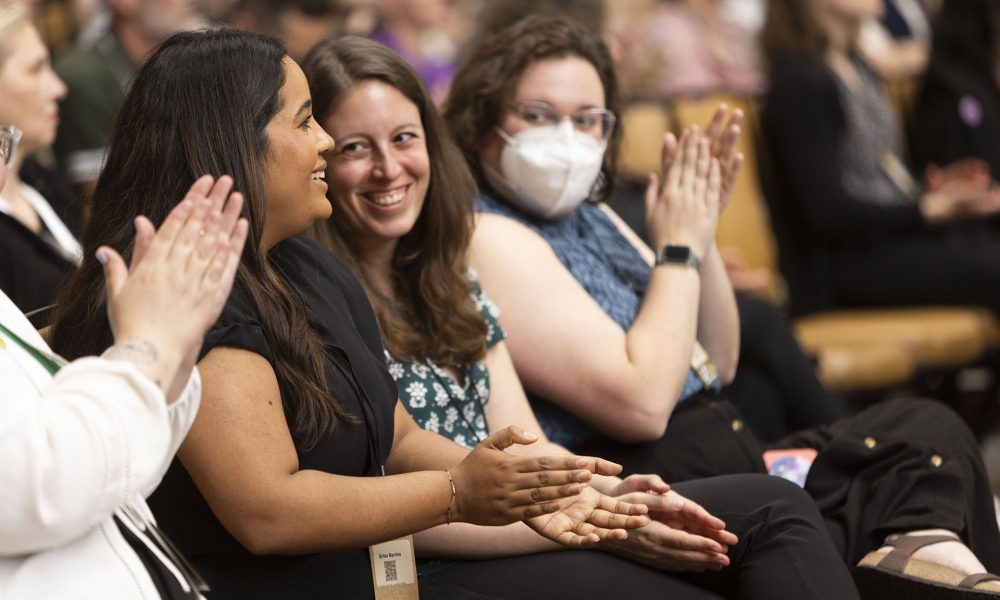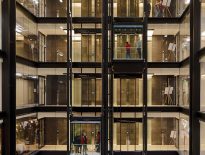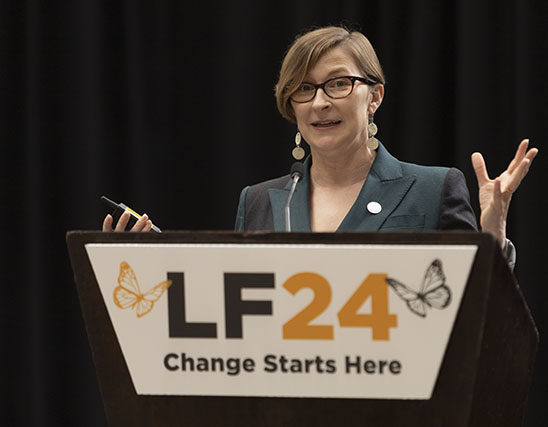
At Living Future this year, in my hometown of Atlanta, I kicked off the conference by sharing 10 things that are on my mind. Here’s a recap.
While you all are out there designing products, building buildings, doing innovative research, writing policy, I spend a lot of my time on movement strategy work, along with my colleagues and our co-conspirators. I am observing various tactics we’re using to try to transform our industry, thinking about how we can make things work better or faster or more equitably, how we’re advancing regenerative design, and how we’re engaging at the international scale. That work gives me a perspective that I hope will be a helpful spark.
Global alignment on carbon accounting
This year at the very first UN Global Forum on Buildings and Climate, we celebrated the unveiling of the official Buildings Breakthrough Agenda for our sector: it is the global plan to achieve the decarbonization goals of the Paris Agreement by 2050. The very first item on our collective to-do list is for standards and certification bodies to align on definitions and assessment methods for near-zero emissions and resilient buildings. This may seem technical, but it is critical: In our work to decarbonize our sector, we can’t get very far without having clear rules of the game that are shared around the world.
US alignment on carbon & buildings
Many of you know that we have been leaders on this effort here in the US, along with our co-conveners, via the ECHO Project that we began a year ago. We have also been at the table with the White House and other government leaders to help them create a Federal Zero Emissions Building definition that is very much a part of this larger global effort. This is incredible momentum at the US level. When we align on the ways we measure, it enables us to push harder, move faster and reduce confusion in the industry. It allows us to work across borders, which is critical in a deeply globalized world. And of course, it’s a great sign that we have super sharp people in the White House who are directly engaged in this particular piece of the decarbonization landscape — there is a building scientist working for our President right now!
Alignment on materials
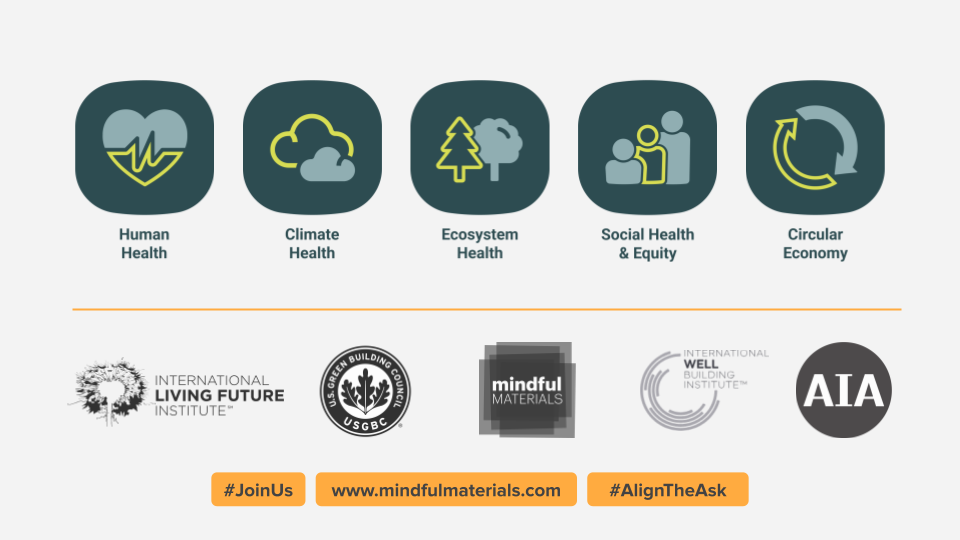
Decarbonization is not the only place I’m seeing big efforts around alignment. I want to give a shout-out here to our friends and partners at mindfulMATERIALS for their work on aligning on a common ask for building materials manufacturers around the impacts of our products. This is allowing us to send a stronger market signal, clear up confusion, prevent greenwashing and, critically, to avoid the tendency to focus on only one attribute like carbon emissions, instead showing how all impacts — climate, health, social justice, biodiversity, etc. — matter and need to be accounted for. This has been a big year for alignment on the common ask, and I have confidence that these moves are going to rapidly accelerate change for building product manufacturing.
Understanding wood and forests
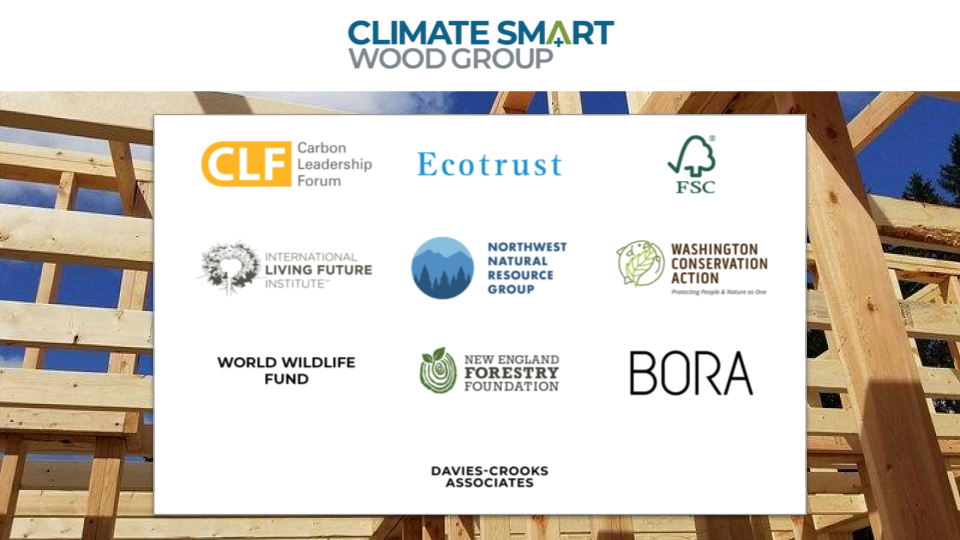
I’ve also been spending time this past year thinking about our precious forests and the wood industry. This past year, ILFI joined the Climate Smart Wood Group, where a number of forest-focused nonprofits are sitting with buildings-focused nonprofits and other building industry leaders to ensure that the push for mass timber and wood as a construction material is not contributing to negative ecological impacts but instead contributing to regenerative forestry. BuildingGreen has wonderful coverage on this issue. We are building great momentum here by working collectively. We are stronger together. And that is worth celebrating.
Inequality & access to housing
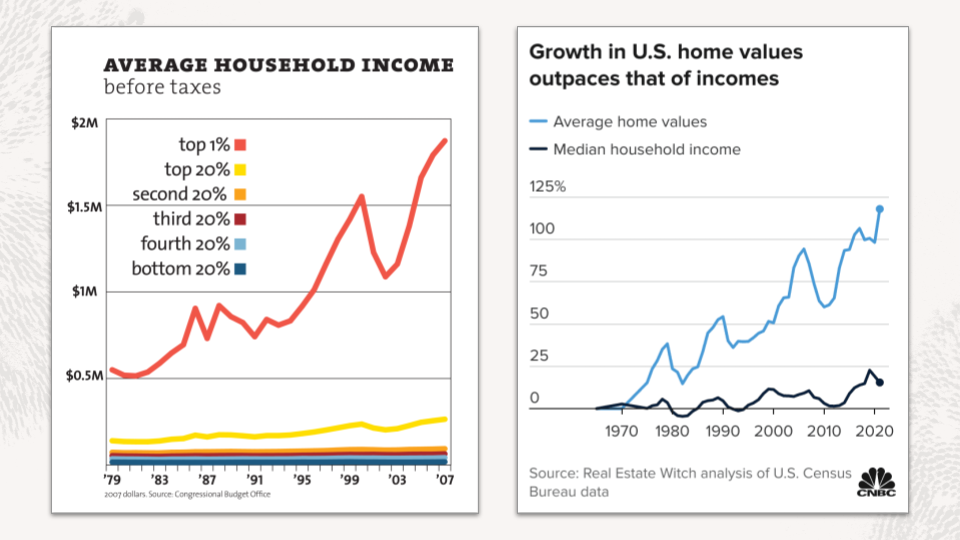
Not every sign this year has been a positive sign. It has been a hard year for many who work on building peace, liberation and foundational quality of life for all people. In our vision for a living future, we imagine a socially just world, which is one in which housing is a fundamental human right. However, we are seeing trends that are sending us in the wrong direction. First, economic inequality is growing. Second, buying a home is becoming less and less possible as the price of housing continues to rise while incomes don’t rise at anywhere near the same fast rate. These larger economic trends are then impacting what can be built, such that housing (even rental housing) is becoming more and more out of reach for people in the US and in many countries like ours.
This is a problem for our community to help solve. We need to find ways to build and maintain affordable housing. We need to help contribute to the creation of housing security in the form of ownership models like Community Land Trusts, cooperative models, and policies and regulations that promote affordability. At ILFI we are working on a new initiative to address equity and justice issues in a deeper way across our work, and that our Affordable Housing program is going strong with a new cohort of members. But these problems will require systemic change, more of us working together, and deeply intersectional approaches.
A shifting landscape for DEI work
The next big thing I’m thinking about in the world of justice and liberation is around Diversity, Equity and Inclusion. We’ve seen a disturbing thing happen this year around DEI work, which can best be described with the word backlash. We can expect more backlash on more of the issues we care about in coming years, and we need to double down on our commitments to increasing diversity, promoting cultures of belonging and inclusion, and real equity work, especially around racial equity here in the US where racial inequalities continue to have tragic and lasting impacts on society and on our lives. As the outrage of racial reckonings of 2020 fades for some, it’s especially important for us to keep up momentum in our DEI work.
Launching Just 3.0
With that urgency I am very proud to announce the re-launch of our Just program in Just 3.0! For those who don’t know Just, Just is a voluntary disclosure tool and framework for reflection, evaluation, communication, and continuous improvement that helps organizations address social justice and equity throughout all aspects of their policies, practices, and culture. Through Just, organizations publicly commit to an equitable and healthy workplace, examine their existing systems, culture, and practices, and take action. Many organizations in the building industry are waking up to equity issues or a deepening desire to address them, but need a guiding framework to help them get started and keep moving. That is how we hope to help with Just. Just 3.0 is the result of a rigorous development process that involved extensive research and collaboration.
“A Living Future is one where life wins, where our many global cultures thrive, where we all are treated fairly and where we treat our planet with the same respect and love.“
Working towards a living future amidst destruction
I am also thinking about how much harder our work is to find our Living Future in a world with so much destruction and death. The past six months in particular have felt like heartbreaking times to watch the politics of society play out around the world. There are no words I can find to describe the grief and the disappointment that I feel, that I know many of us feel, watching as people kill each other and destroy each other’s worlds.
We are not disconnected from this as people working towards a living future. A living future is one where life wins, where our many global cultures thrive, where we all are treated fairly and where we treat our planet with the same respect and love. It’s a future where we don’t bomb each other, we don’t destroy each others’ homes, we don’t cut down our trees as an act of war, we don’t destroy our precious infrastructure. To be a part of this community is to fight for life for everyone, and to find the ways to make that possible. And community finds space to heal together, to grieve together, and to support those in need together.
Bio-based materials resurgence
One of the most exciting parts of the past year is the building momentum for natural and biobased materials. Obviously, we’ve been seeing a rise in interest in Mass Timber for a few years now, and we’ve been seeing a lot of new biobased products grow in the market like Hempcrete and panelized straw technologies, but this year was a particularly great year for biobased materials and I really hope that trend continues.
One big boost this year was the UN Global Alliance for Buildings and Construction Report released in collaboration with the Yale Center for Ecosystems & Architecture on Building Materials and Climate. I love how it places this shift in its rightful place in a set of three cascading priorities for our industry. The first priority is to avoid the use of new materials in the first place through building and materials reuse. The second priority is to shift to biobased materials wherever possible. The third priority is to improve the carbon footprint of conventional extracted materials. I love this framing. It shows the growing momentum and importance of bio-based materials especially in the Global South where so much of the new construction is occurring in the world today.
Decarbonization and decolonization
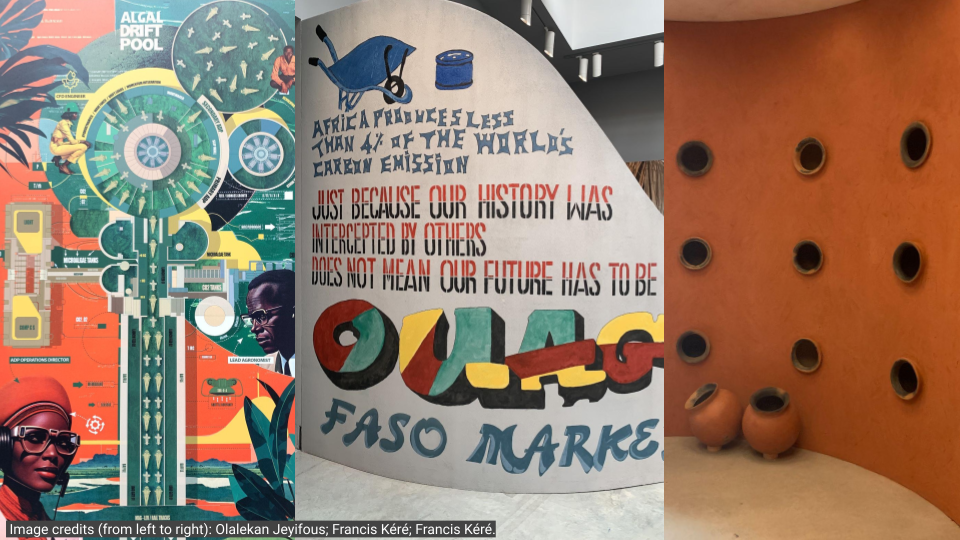
The last thing on my mind stems from a moving experience I had — visiting the 2023 Architecture Biennale in Venice, Italy. For the first time in history, the exhibition focused on the work of the African diaspora with the themes of decarbonization and decolonization. Many in the exhibition highlighted connections between global extractive and polluting industry and the history of colonization and war. At the same time, there were many depictions of a better world that is possible (such as contributions from Francis Kéré and MASS Design Group). A core characteristic of many visions for that better future is indigeneity — indigenous labor, craft, and materials that are biobased and regenerative.
Many might think that this vision for the future sounds impractical. We are not those people. We know that it is deeply possible to build buildings that celebrate place, that create good jobs, that are built out of the materials of the ecosystem in which they are constructed. It is time to link arms and support these visions, to find inspiration from them ourselves. I certainly did.
